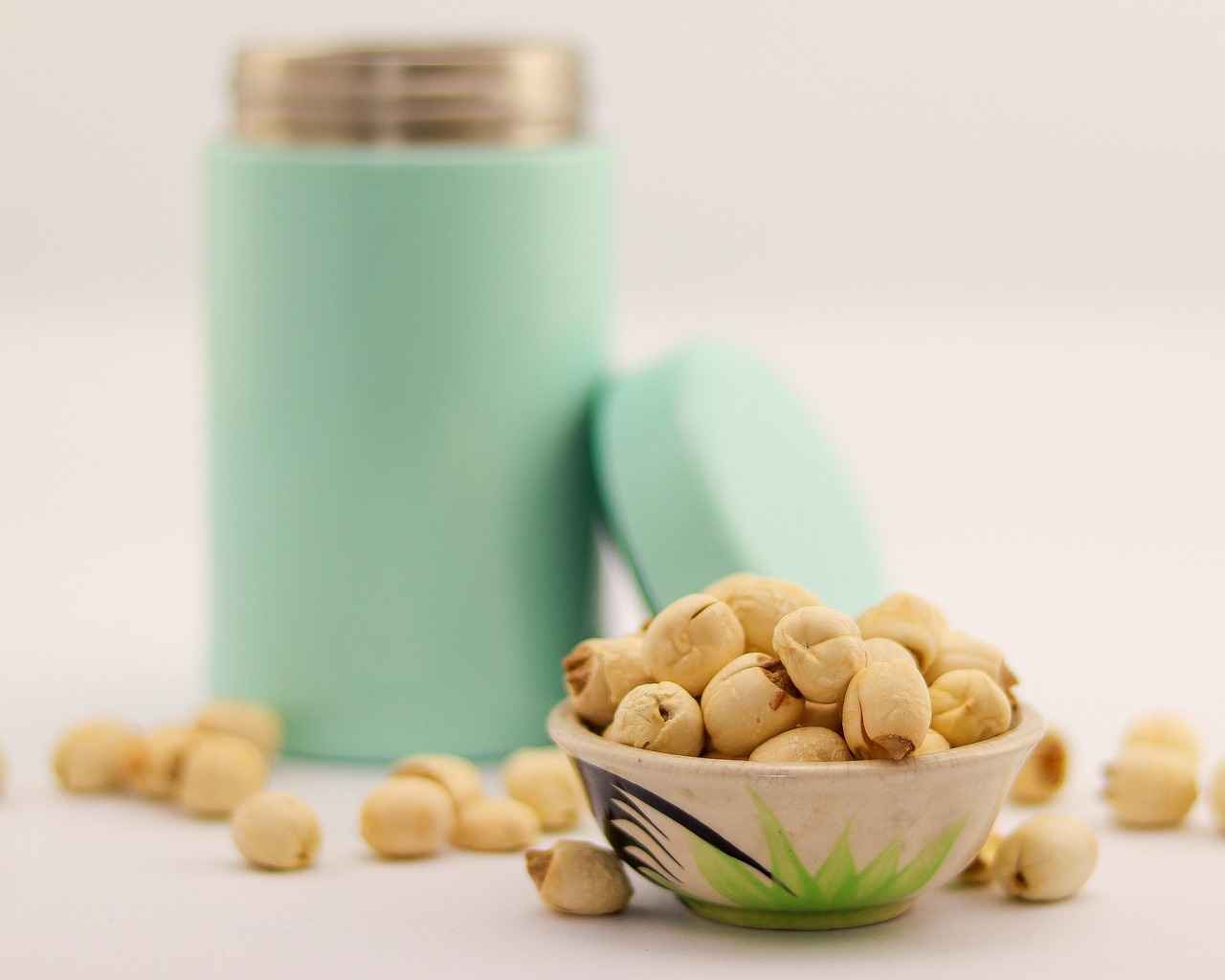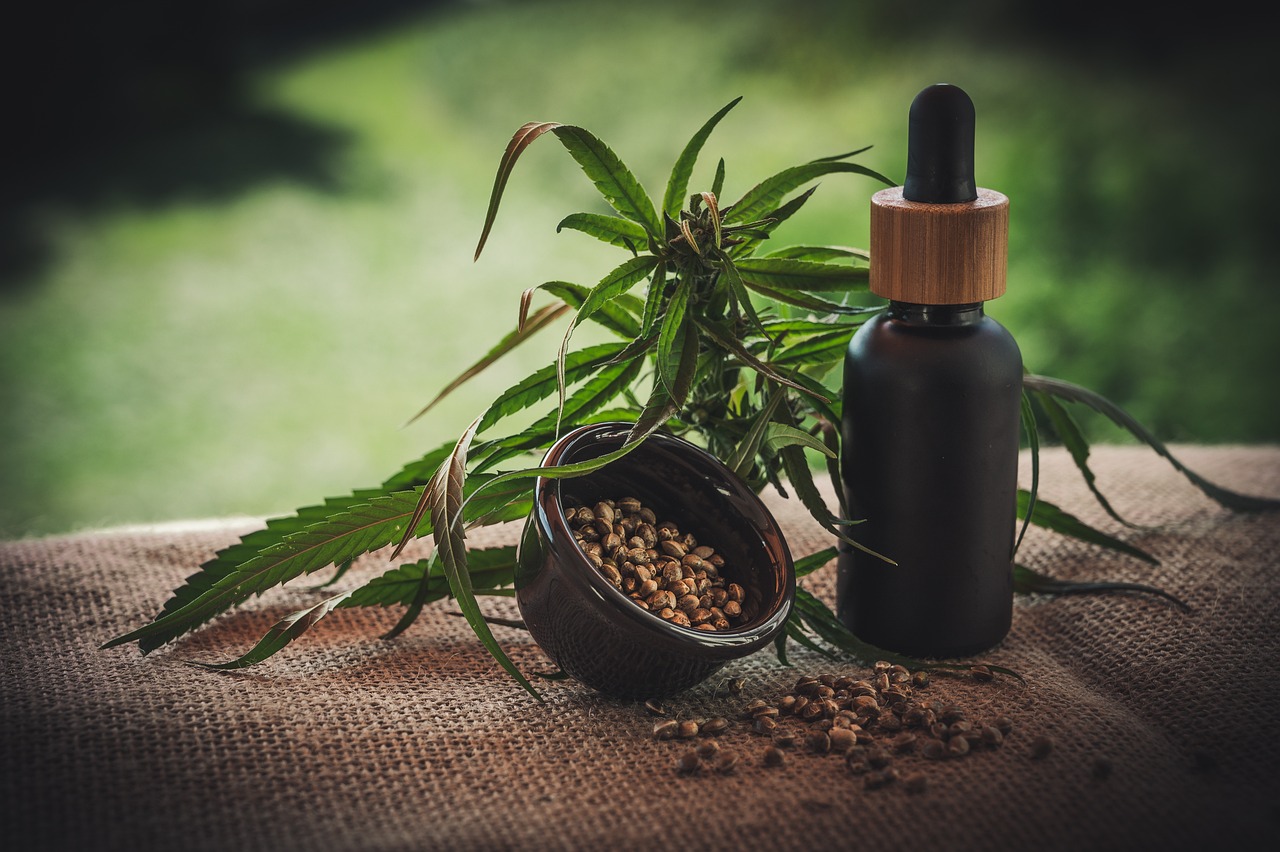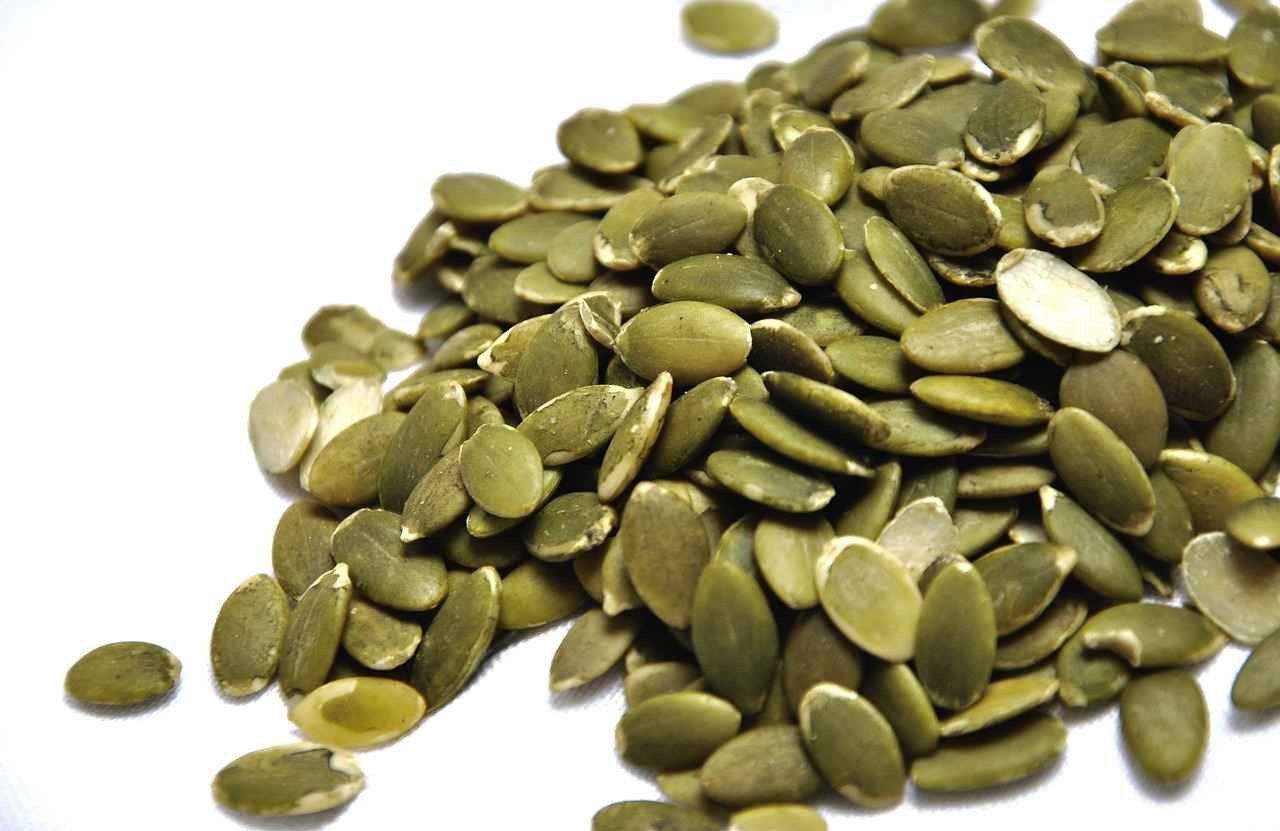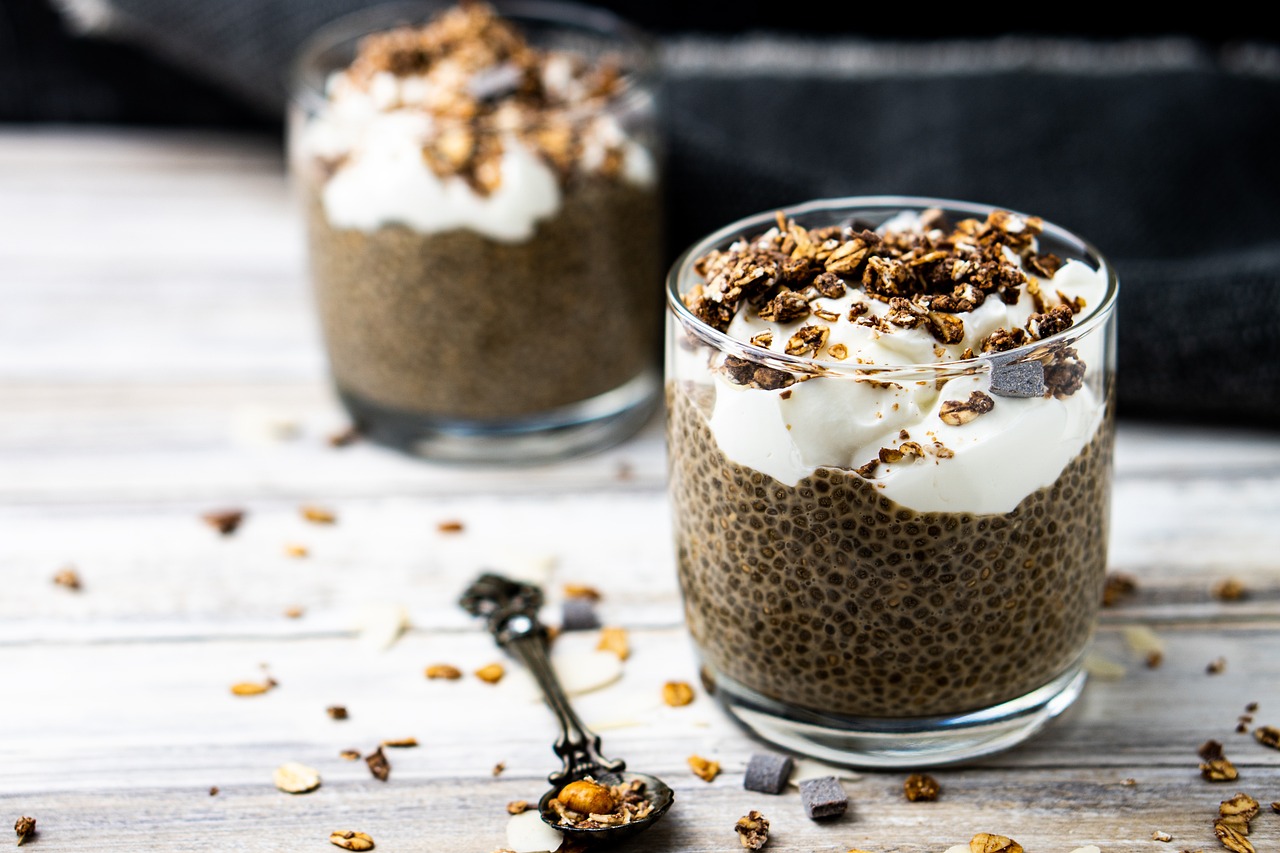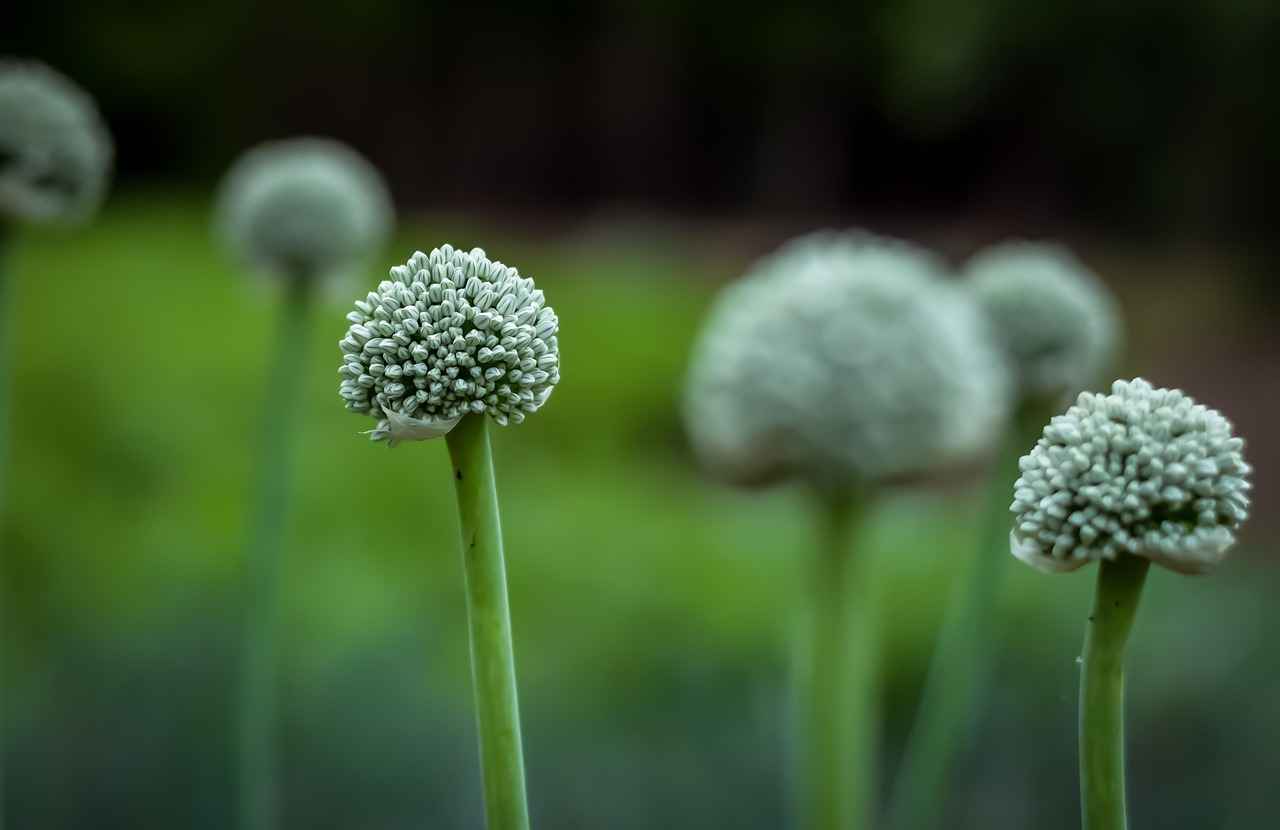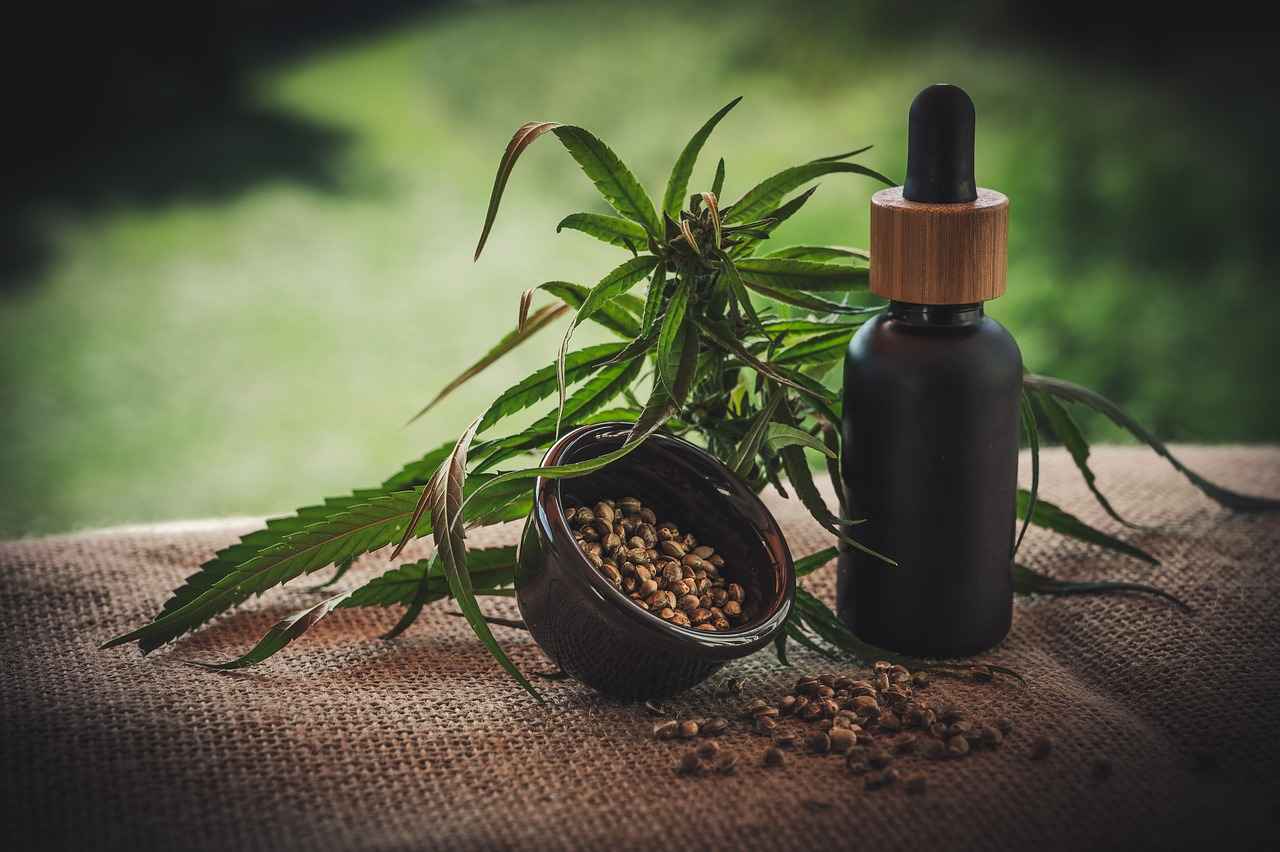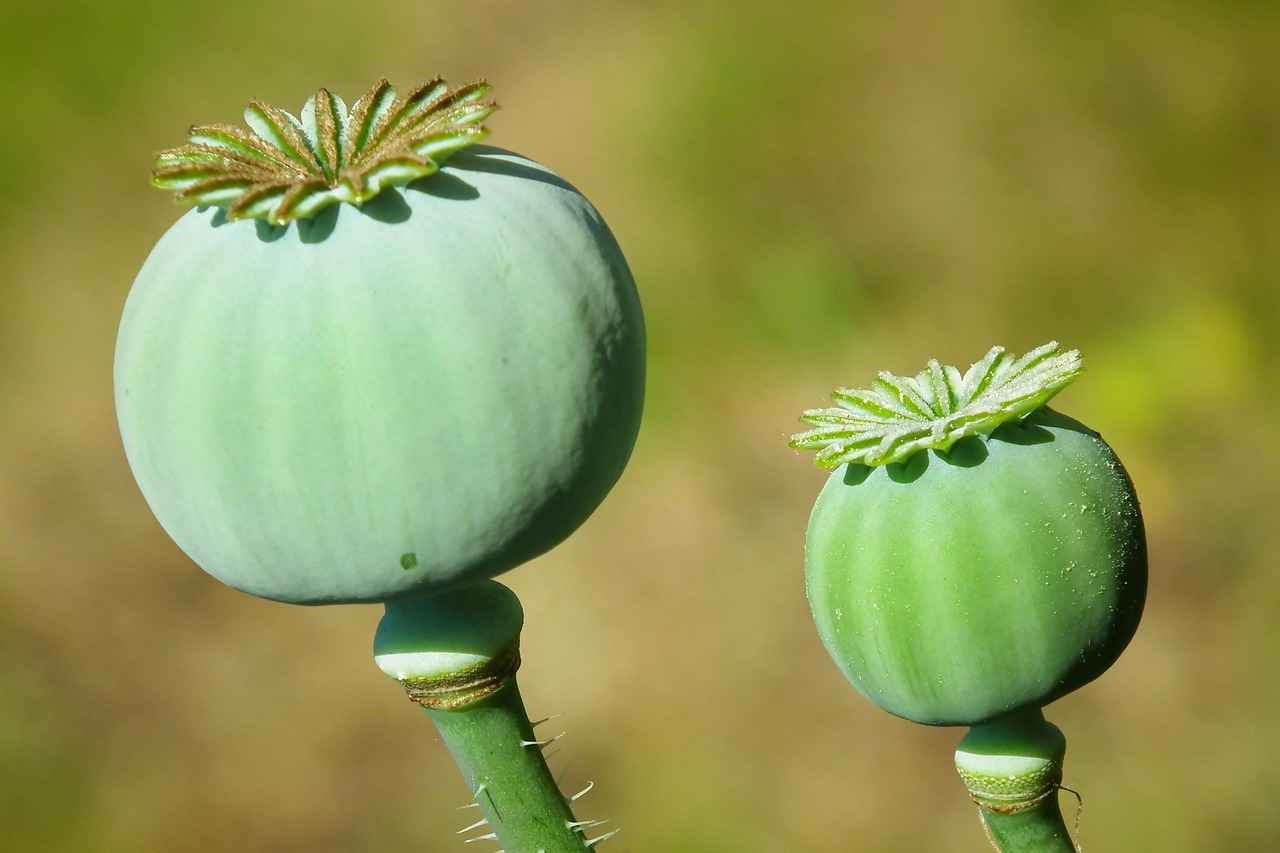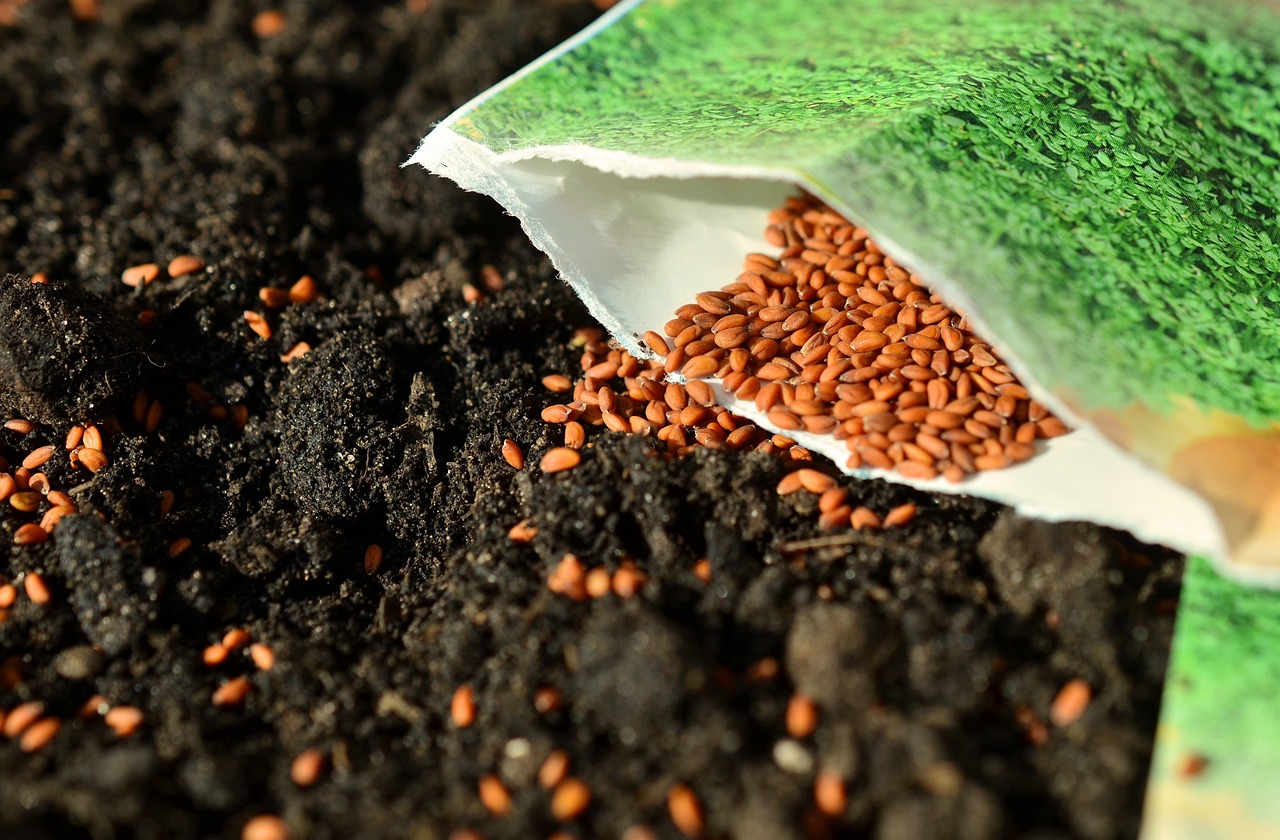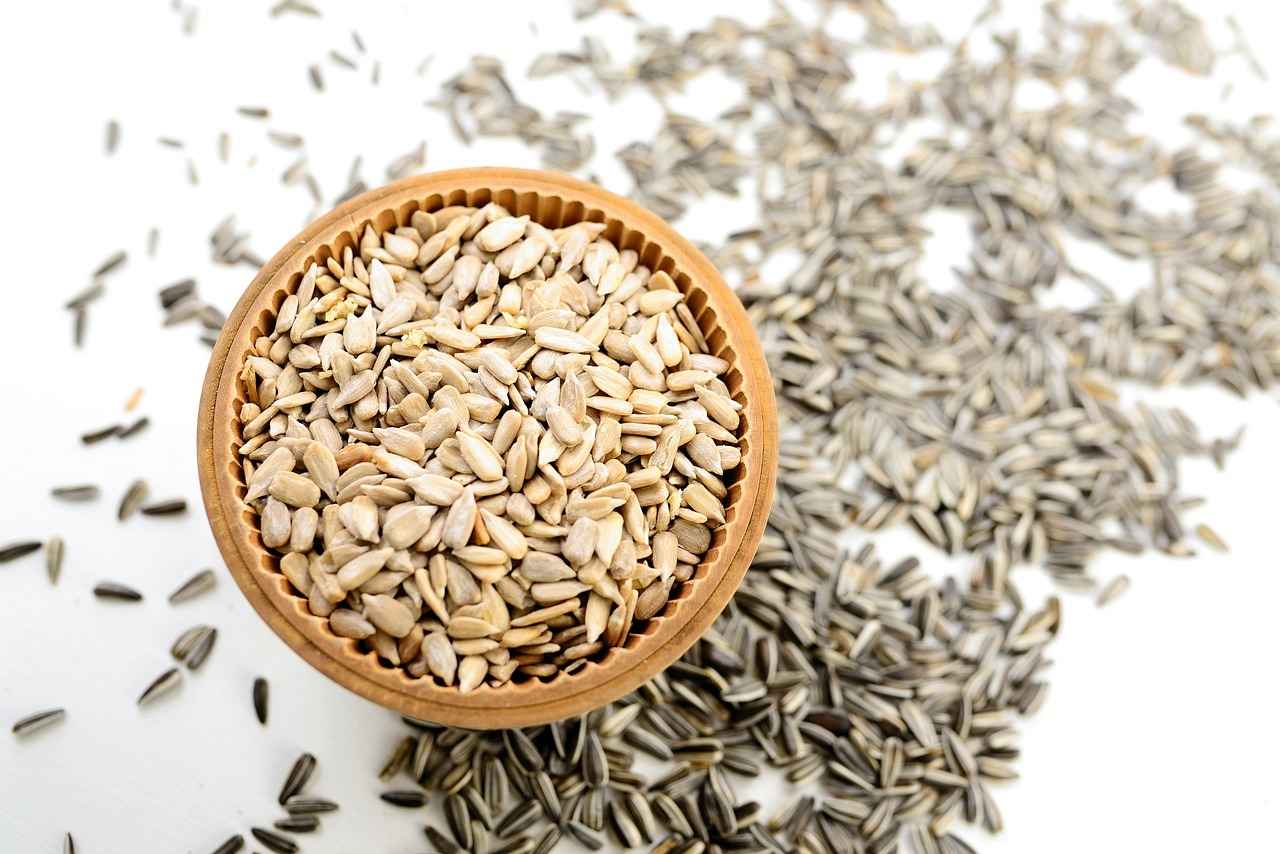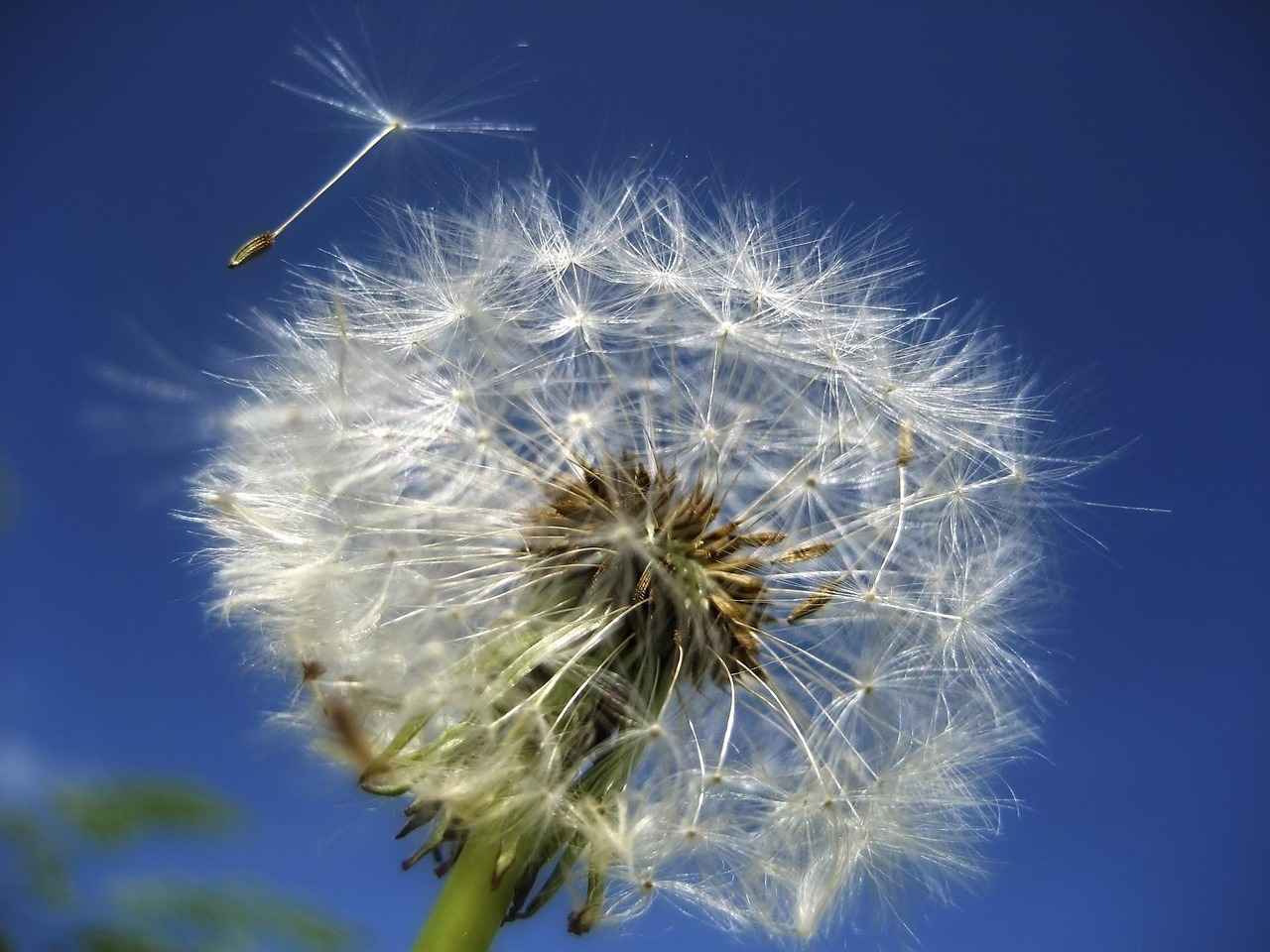Discover the nutritional benefits of chia seeds and explore various ways to incorporate them into your meals for a healthier lifestyle. Chia seeds, tiny yet powerful, have gained popularity as a superfood due to their remarkable health benefits and versatility in cooking.
What Are Chia Seeds?
Chia seeds are small black seeds derived from the Salvia hispanica plant, a member of the mint family. These seeds are rich in essential nutrients, including omega-3 fatty acids, fiber, and protein, making them a valuable addition to any diet.
Why Should You Include Chia Seeds in Your Diet?
- Improved Digestion: The high fiber content in chia seeds promotes digestive health and regularity.
- Heart Health: Omega-3 fatty acids support cardiovascular health by reducing inflammation and improving cholesterol levels.
- Sustained Energy: Chia seeds provide a slow and steady release of energy, making them ideal for maintaining stamina throughout the day.
Health Benefits of Chia Seeds
Chia seeds offer numerous health benefits that can enhance your overall well-being:
- Weight Management: Their ability to absorb water and expand in the stomach helps you feel fuller for longer, aiding in weight control.
- Rich Source of Omega-3 Fatty Acids: Chia seeds are one of the richest plant-based sources of omega-3s, crucial for brain health and reducing inflammation.
- High Fiber Content: The impressive fiber content aids digestion and supports gut health.
How to Prepare Chia Seeds
Preparing chia seeds is straightforward and versatile. You can consume them:
- Raw: Sprinkle them on salads or yogurt.
- Soaked: Combine with water or milk to create a gel-like consistency.
- Ground: Use in smoothies or baking for added nutrition.
Ways to Incorporate Chia Seeds into Your Meals
There are countless ways to add chia seeds to your diet:
- Chia Seed Pudding: Mix chia seeds with milk or a milk alternative, sweeten, and let sit overnight for a creamy, nutritious breakfast.
- Smoothies: Blend chia seeds into your favorite smoothie for a nutritional boost.
- Baking: Add chia seeds to muffins, breads, and pancakes for extra texture and nutrition.
- Thickening Agent: Use chia seeds to thicken soups, sauces, and dressings.
How to Store Chia Seeds Properly
To maintain their freshness, store chia seeds in a cool, dry place in an airtight container away from direct sunlight. This will help preserve their nutritional value and prevent spoilage.
Are There Any Risks of Consuming Chia Seeds?
While chia seeds are generally safe for most people, moderation is key. Overconsumption may lead to digestive discomfort due to their high fiber content. It’s advisable to start with a small amount and gradually increase your intake.
Potential Allergies and Interactions
Some individuals may experience allergic reactions to chia seeds. If you have concerns about allergies or interactions with medications, consult with a healthcare provider.
Recommended Serving Size
A typical serving size of chia seeds ranges from one to two tablespoons. This amount provides significant health benefits without overwhelming your digestive system.
Incorporating chia seeds into your daily diet can be a simple yet effective way to enhance your nutritional intake and support a healthier lifestyle. Their versatility and health benefits make them a worthy addition to any meal.

What Are Chia Seeds?
Chia seeds are small, nutrient-dense seeds derived from the Salvia hispanica plant, which is native to Central America. These tiny black seeds have gained immense popularity in recent years due to their rich nutritional profile and versatility in various culinary applications. Packed with essential nutrients, chia seeds are an excellent addition to a healthy diet.
Chia seeds are tiny black seeds from the Salvia hispanica plant, known for their high nutritional value and versatility in cooking. They are packed with omega-3 fatty acids, fiber, and protein. Just a small serving of chia seeds can provide a significant portion of your daily nutritional needs. These seeds are unique in that they can absorb up to 12 times their weight in water, forming a gel-like substance that can enhance the texture of various dishes.
Chia seeds are often referred to as a superfood due to their remarkable health benefits. They are an excellent source of:
- Omega-3 Fatty Acids: Essential for brain health and reducing inflammation.
- Dietary Fiber: Supports digestive health and helps maintain a healthy weight.
- Protein: Aids in muscle repair and growth.
- Antioxidants: Protects cells from damage caused by free radicals.
Incorporating chia seeds into your daily diet can lead to numerous health advantages:
- Improved Digestion: The high fiber content aids in digestion and promotes regular bowel movements.
- Heart Health: Omega-3 fatty acids contribute to lower cholesterol levels and improved cardiovascular health.
- Sustained Energy: Chia seeds provide a slow release of energy, helping to keep you energized throughout the day.
Chia seeds are incredibly versatile and can be easily incorporated into various meals. Here are some popular ways to use them:
- Chia Seed Puddings: Combine chia seeds with milk or a milk alternative to create a creamy pudding.
- Smoothies: Add a tablespoon of chia seeds to your favorite smoothie for an extra nutrient boost.
- Baking: Include chia seeds in muffins, bread, or pancakes for added texture and nutrition.
- Salads: Sprinkle chia seeds on salads for a crunchy topping.
Preparing chia seeds is straightforward. They can be consumed raw, soaked, or ground:
- Soaking: Soak chia seeds in water or milk for at least 30 minutes to allow them to expand and form a gel.
- Raw Consumption: Sprinkle them directly onto foods like yogurt or oatmeal.
- Ground: Grinding chia seeds can enhance nutrient absorption and make them easier to digest.
While chia seeds are generally safe for most individuals, moderation is key. Overconsumption can lead to digestive discomfort due to their high fiber content. It’s advisable to start with a small serving and gradually increase your intake.
In summary, chia seeds are a nutritious and versatile addition to your diet. Their numerous health benefits and ease of use make them an ideal ingredient for anyone looking to enhance their nutrition.
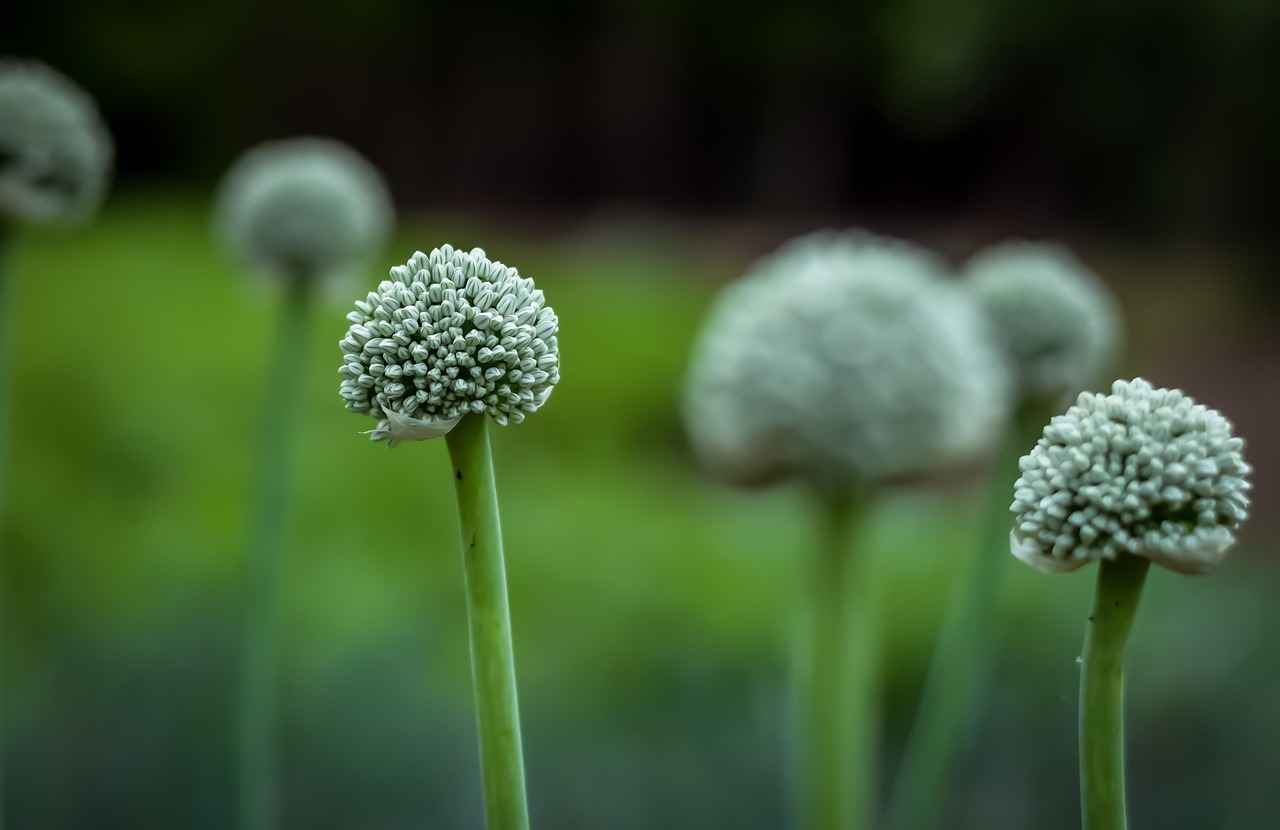
Why Should You Include Chia Seeds in Your Diet?
Chia seeds have gained immense popularity as a superfood, and for good reason. These tiny seeds are not only versatile but also packed with essential nutrients that can significantly enhance your overall health. By incorporating chia seeds into your daily diet, you can experience numerous health benefits that contribute to a healthier lifestyle.
Improved Digestion
One of the primary reasons to include chia seeds in your diet is their impressive fiber content. Just two tablespoons of chia seeds provide approximately 11 grams of fiber, which is about one-third of the recommended daily intake for adults. This high fiber content promotes healthy digestion by aiding in regular bowel movements and preventing constipation. Furthermore, chia seeds can help regulate blood sugar levels, making them an excellent choice for those managing diabetes.
Boost Heart Health
Chia seeds are also known for their ability to boost heart health. They are rich in omega-3 fatty acids, which are essential for maintaining cardiovascular health. Omega-3s help reduce inflammation, lower blood pressure, and decrease triglyceride levels in the blood. By incorporating chia seeds into your diet, you can support a healthy heart and reduce the risk of heart disease.
Sustained Energy Throughout the Day
Another significant advantage of chia seeds is their ability to provide sustained energy. Unlike quick-energy sources that can lead to crashes, chia seeds release energy slowly, helping to keep you feeling full and energized throughout the day. This makes them an ideal addition to breakfast smoothies or snacks, providing a steady source of energy for your busy lifestyle.
Weight Management
For those looking to manage their weight, chia seeds can be a valuable ally. Their high fiber content promotes a feeling of fullness, which can help reduce overall calorie intake. Additionally, chia seeds absorb liquid and expand in your stomach, further enhancing satiety. Incorporating chia seeds into meals can aid in weight management efforts without feeling deprived.
Rich in Antioxidants
Chia seeds are also a rich source of antioxidants, which play a crucial role in protecting your body from oxidative stress and inflammation. Antioxidants help combat free radicals, reducing the risk of chronic diseases and promoting overall health. Including chia seeds in your diet can contribute to a more robust immune system and improved overall well-being.
How to Incorporate Chia Seeds into Your Diet
- Chia Seed Pudding: Mix chia seeds with milk or a milk alternative and let them soak overnight for a delicious breakfast or snack.
- Smoothies: Add a tablespoon of chia seeds to your favorite smoothie for an extra nutritional boost.
- Baking: Incorporate chia seeds into muffins, bread, or pancakes for added texture and nutrition.
- Salads and Dressings: Sprinkle chia seeds on salads or mix them into dressings for enhanced flavor and nutrition.
In conclusion, the benefits of including chia seeds in your diet are numerous and varied. From improving digestion to boosting heart health and providing sustained energy, these tiny seeds pack a powerful nutritional punch. By incorporating chia seeds into your meals, you can take a significant step towards a healthier lifestyle.
Health Benefits of Chia Seeds
Chia seeds, often hailed as a superfood, are tiny yet powerful seeds that offer a multitude of health benefits. These seeds, derived from the Salvia hispanica plant, are rich in essential nutrients that can significantly enhance your overall well-being. Let’s explore the various health benefits that chia seeds provide.
One of the most notable benefits of chia seeds is their ability to assist in weight management. Their high fiber content—approximately 11 grams per ounce—helps to promote a feeling of fullness, which can reduce overall calorie intake. When chia seeds are consumed, they absorb water and expand in your stomach, creating a gel-like substance that slows down digestion and prolongs satiety. This makes them an excellent addition to meals if you’re looking to manage your weight effectively.
Chia seeds are an excellent source of dietary fiber, which plays a crucial role in maintaining digestive health. The soluble fiber in chia seeds helps to regulate bowel movements and prevent constipation. Additionally, the fiber acts as a prebiotic, feeding the beneficial bacteria in the gut, thereby promoting a healthy microbiome. Regular consumption of chia seeds can lead to improved digestive function and overall gut health.
Including chia seeds in your diet can be beneficial for heart health. They are packed with omega-3 fatty acids, which are known to reduce inflammation and lower blood pressure. These healthy fats can help decrease levels of LDL cholesterol (the “bad” cholesterol) while increasing HDL cholesterol (the “good” cholesterol). This balance is essential for maintaining a healthy heart and reducing the risk of cardiovascular diseases.
The high fiber content in chia seeds also plays a significant role in regulating blood sugar levels. By slowing down the absorption of sugar in the bloodstream, chia seeds can help prevent spikes in blood sugar levels, making them an excellent food choice for individuals with diabetes or those looking to maintain stable energy levels throughout the day.
Chia seeds are a rich source of several nutrients important for bone health, including calcium, magnesium, and phosphorus. Just two tablespoons of chia seeds provide about 18% of the recommended daily intake of calcium. These minerals are crucial for maintaining strong bones and preventing osteoporosis.
The combination of protein, fiber, and healthy fats in chia seeds makes them an excellent source of sustained energy. Unlike refined carbohydrates that provide a quick energy spike followed by a crash, chia seeds offer a steady release of energy, making them a great snack for athletes and anyone needing a boost during the day.
Incorporating chia seeds into your daily meals is simple. You can add them to smoothies, yogurt, oatmeal, or even baked goods. Their mild flavor and versatility make them an easy addition to a variety of dishes, allowing you to reap their numerous health benefits without altering the taste of your favorite meals.
Rich Source of Omega-3 Fatty Acids
Chia seeds have gained popularity in health circles, and for good reason. These tiny black seeds are not only a culinary delight but also a powerhouse of nutrition. One of their most notable attributes is their status as a , which are crucial for maintaining optimal health.
Omega-3 fatty acids are a type of polyunsaturated fat that plays a vital role in numerous bodily functions. They are essential fats, meaning the body cannot produce them on its own and must obtain them through diet. These fatty acids are primarily known for their benefits in:
- Brain Health: Omega-3s support cognitive function, memory, and mood regulation.
- Heart Health: They help lower blood pressure, reduce triglycerides, and prevent arterial plaque buildup.
- Reducing Inflammation: Omega-3s can help mitigate chronic inflammation, which is linked to various diseases.
While omega-3 fatty acids are commonly found in fish, chia seeds offer a plant-based alternative. They contain alpha-linolenic acid (ALA), one of the three main types of omega-3 fatty acids. Here’s a quick comparison:
| Source | Omega-3 Content (per 100g) |
|---|---|
| Chia Seeds | 17g |
| Flaxseeds | 22g |
| Salmon | 2.6g |
As illustrated, chia seeds provide a substantial amount of omega-3s, making them an excellent choice for vegetarians and vegans.
Adding chia seeds to your diet is simple and versatile. Here are some practical tips:
- Chia Seed Pudding: Mix chia seeds with your choice of milk and let them soak overnight for a nutritious breakfast.
- Smoothies: Blend chia seeds into your smoothies for added texture and nutritional value.
- Baking: Incorporate chia seeds into muffins, bread, or pancakes for a health boost.
While omega-3 fatty acids are beneficial, moderation is key. Excessive intake can lead to side effects such as:
- Digestive Issues: High fiber content in chia seeds may cause bloating or gas if consumed in large quantities.
- Blood Thinning: Omega-3s can have a blood-thinning effect, which may be a concern for individuals on anticoagulant medications.
In summary, chia seeds are a nutrient-dense food that offers a plethora of health benefits, particularly due to their high omega-3 fatty acid content. By incorporating them into your meals, you can enhance your overall health while enjoying their unique texture and mild flavor. Remember to consume them in moderation to fully reap their benefits without adverse effects.
High Fiber Content
Chia seeds, often regarded as a superfood, are renowned for their remarkable fiber content. Each serving of chia seeds contains approximately 11 grams of fiber, which is about 42% of the recommended daily intake for adults. This high level of fiber is one of the primary reasons why chia seeds are considered beneficial for digestive health.
Why is fiber so important? Fiber plays a crucial role in maintaining a healthy digestive system. It aids in regulating bowel movements, preventing constipation, and promoting a healthy gut microbiome. The soluble fiber found in chia seeds absorbs water and forms a gel-like substance in the digestive tract, which not only helps to slow down digestion but also promotes a feeling of fullness. This can be particularly beneficial for those looking to manage their weight or reduce snacking between meals.
Furthermore, the fiber in chia seeds can help to stabilize blood sugar levels. When fiber-rich foods are consumed, they slow the absorption of sugar into the bloodstream, which can prevent spikes and crashes in blood sugar levels. This is especially important for individuals with diabetes or those at risk of developing diabetes.
In addition to aiding digestion, the fiber content in chia seeds supports heart health. Studies have shown that a diet high in fiber can lower cholesterol levels, reduce inflammation, and improve overall cardiovascular health. By incorporating chia seeds into your daily diet, you can contribute to better heart health and reduced risk of heart disease.
How can you easily add chia seeds to your diet? Here are some practical suggestions:
- Chia Seed Pudding: Combine chia seeds with your choice of milk or yogurt and let them soak overnight. This creates a delicious, creamy pudding that can be enjoyed for breakfast or as a snack.
- Smoothies: Add a tablespoon of chia seeds to your favorite smoothie recipe. They blend well and enhance the nutritional value without altering the flavor.
- Baking: Incorporate chia seeds into baked goods like muffins, bread, or pancakes. They add a delightful crunch and boost the fiber content of your meals.
- Soups and Sauces: Use chia seeds as a thickening agent in soups or sauces. When added to liquids, they absorb moisture and create a gel-like consistency, enhancing the texture of your dishes.
It’s important to note that while chia seeds offer numerous health benefits, they should be consumed in moderation. The high fiber content can lead to digestive discomfort if consumed in excessive amounts, especially if your body is not used to a high-fiber diet. It’s advisable to start with a small serving, such as one tablespoon, and gradually increase your intake as your digestive system adjusts.
In summary, the high fiber content of chia seeds makes them an excellent addition to a balanced diet. They not only support digestive health but also contribute to heart health and stable blood sugar levels. By incorporating chia seeds into your meals, you can enjoy their numerous health benefits while enhancing the nutritional profile of your diet.
How to Prepare Chia Seeds
Chia seeds have gained popularity in recent years due to their numerous health benefits and ease of preparation. is a question many health-conscious individuals are asking, and the answer is quite simple. These tiny seeds can be enjoyed in a variety of ways, making them a versatile addition to any diet.
Chia seeds are small black seeds derived from the Salvia hispanica plant, which is native to Mexico and Guatemala. They are rich in essential nutrients, including omega-3 fatty acids, fiber, and protein, making them an excellent choice for enhancing your overall health.
Preparing chia seeds is not only easy but also opens up numerous possibilities for incorporating them into your meals. Their ability to absorb liquid and form a gel-like substance allows them to be used in various recipes, enhancing both flavor and texture.
Preparing chia seeds is simple and versatile. Here are a few methods to consider:
- Raw Consumption: You can sprinkle raw chia seeds directly onto salads, yogurt, or oatmeal for a nutritious boost.
- Soaked Chia Seeds: Soaking chia seeds in water or milk for about 15-30 minutes allows them to absorb the liquid and expand. This method creates a gel-like consistency that can be used in smoothies or puddings.
- Ground Chia Seeds: Grinding chia seeds in a blender or food processor can make them easier to digest. Ground chia can be added to baked goods, smoothies, or used as a thickening agent in soups and sauces.
Here are some practical tips to help you make the most out of chia seeds:
- Experiment with Ratios: When soaking chia seeds, a common ratio is 1 part chia seeds to 4 parts liquid. Adjust this based on your desired consistency.
- Flavoring Options: Enhance the flavor of soaked chia seeds by adding vanilla extract, cocoa powder, or sweeteners like honey or maple syrup.
- Storage: Store chia seeds in a cool, dry place in an airtight container to maintain their freshness.
Chia seeds can be easily integrated into various meals. Here are some popular ways to use them:
- Chia Seed Pudding: Combine soaked chia seeds with milk or a milk alternative, sweeten to taste, and refrigerate overnight for a delicious breakfast or snack.
- Smoothies: Add a tablespoon of chia seeds to your favorite smoothie recipe for added nutrition and texture.
- Baking: Incorporate chia seeds into muffins, breads, or pancakes for an extra crunch and health benefits.
While chia seeds are generally safe for most people, it’s important to consume them in moderation. Overconsumption may lead to digestive issues due to their high fiber content. A recommended serving size is typically one to two tablespoons per day.
In summary, preparing chia seeds is a straightforward process that offers numerous health benefits. By incorporating them into your meals, you can enjoy their nutritional advantages while enhancing the flavor and texture of your dishes.
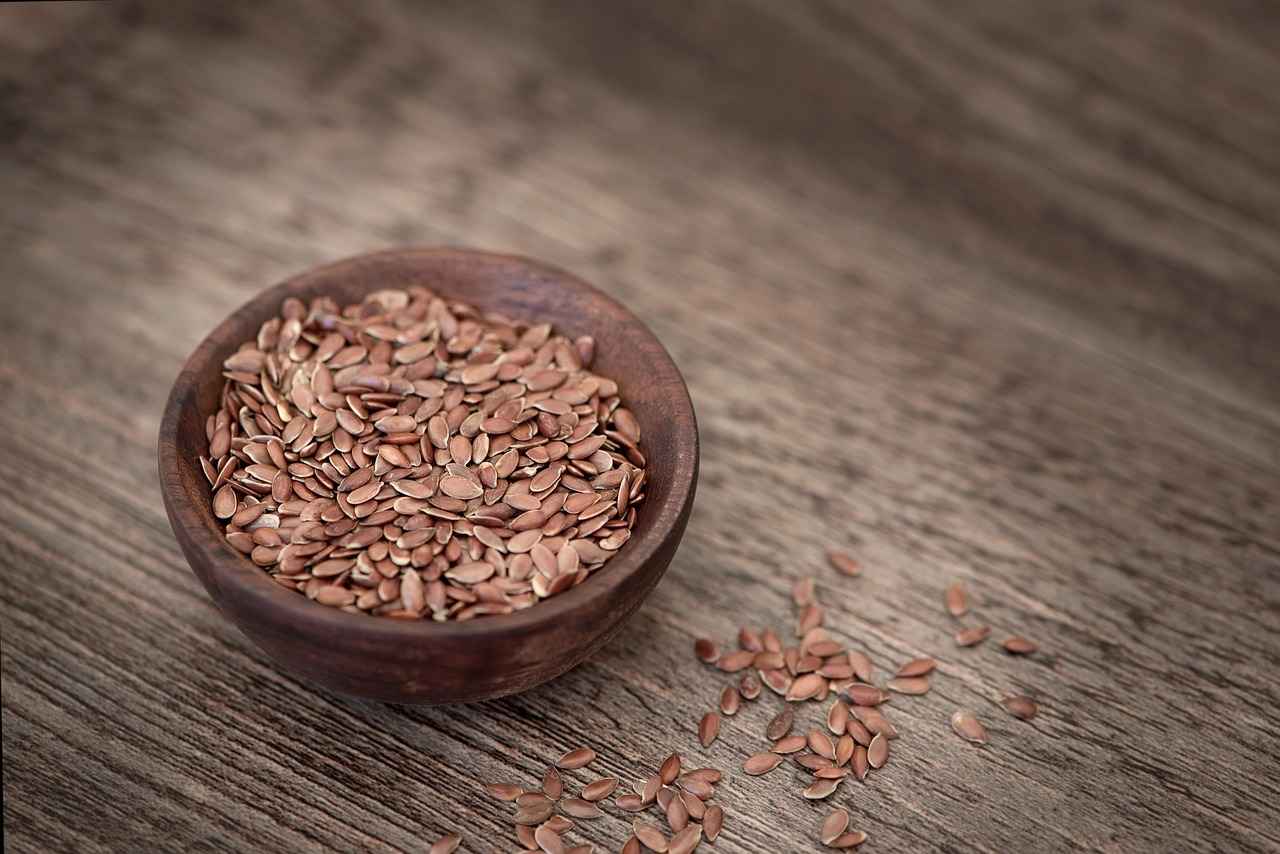
Ways to Incorporate Chia Seeds into Your Meals
Chia seeds are a nutrient-dense superfood that can easily be integrated into a variety of meals. Their mild flavor and unique texture make them a versatile ingredient in both sweet and savory dishes. Here are some innovative ways to incorporate chia seeds into your daily meals:
- Chia Seed Pudding: Mix chia seeds with your choice of milk (dairy or plant-based) and let them soak overnight. This creates a creamy pudding that can be topped with fruits, nuts, or granola for a nutritious breakfast.
- Smoothies: Blend chia seeds into your morning smoothie for an added boost of fiber and omega-3 fatty acids. They blend seamlessly and enhance the texture without altering the flavor.
- Overnight Oats: Stir chia seeds into your overnight oats mixture. This not only thickens the oats but also enriches them with essential nutrients.
- Salads: Sprinkle chia seeds on top of salads for a delightful crunch and added nutrition. They can also be mixed into dressings, providing a thicker consistency.
- Soups: Use chia seeds as a thickening agent in soups and stews. When added to hot liquids, they absorb water and create a gel-like texture, enhancing the dish’s body.
- Wraps and Sandwiches: Incorporate chia seeds into spreads or hummus that you use in wraps and sandwiches, adding extra fiber and protein.
Baking with chia seeds is an excellent way to boost the nutritional profile of your favorite recipes. Here are a few ideas:
- Bread and Muffins: Add chia seeds to bread or muffin batter for a nutritious twist. They not only provide texture but also help retain moisture.
- Pancakes and Waffles: Mix chia seeds into your pancake or waffle batter. They add a unique crunch and enhance the overall nutritional value.
- Energy Bars: Incorporate chia seeds into homemade energy bars or granola bites. They provide a satisfying crunch and help bind the ingredients together.
- Chia Seed Jelly: Create a healthy jelly by mixing chia seeds with fruit puree. Let it sit until it thickens, then spread it on toast or use it as a topping for desserts.
To keep your chia seeds fresh and maintain their nutritional benefits, store them in an airtight container in a cool, dry place. Avoid exposing them to direct sunlight, as this can degrade their quality over time.
Incorporating chia seeds into your meals not only enhances flavor and texture but also adds numerous health benefits. With their versatility, you can easily adapt them to fit your dietary preferences and cooking styles.
Chia Seed Pudding Recipes
Chia seed pudding has gained popularity as a nutritious breakfast option that is both easy to prepare and incredibly versatile. By combining chia seeds with milk or a milk alternative, you can create a delicious, creamy dish that serves as a satisfying snack or dessert. This article will explore various that cater to different tastes and dietary preferences.
Chia seeds are packed with essential nutrients, making them a fantastic addition to your diet. They are rich in omega-3 fatty acids, which are beneficial for heart health, and contain a significant amount of fiber, promoting digestive health. Furthermore, chia seeds are an excellent source of protein, making them a complete food option for breakfast.
Creating a basic chia seed pudding is incredibly simple. Here’s a quick recipe:
- Ingredients:
- 1/4 cup chia seeds
- 1 cup milk or milk alternative (almond, coconut, etc.)
- 1-2 tablespoons sweetener (honey, maple syrup, or agave)
- 1 teaspoon vanilla extract (optional)
- Instructions:
- In a bowl, whisk together the chia seeds, milk, sweetener, and vanilla extract.
- Let the mixture sit for about 5 minutes, then stir again to prevent clumping.
- Cover the bowl and refrigerate for at least 2 hours or overnight until it thickens.
- Serve chilled, topped with your favorite fruits, nuts, or granola.
Once you master the basic recipe, feel free to experiment with different flavors:
- Chocolate Chia Seed Pudding: Add 2 tablespoons of cocoa powder to the basic recipe for a rich chocolate treat.
- Berry Bliss: Blend in fresh or frozen berries before refrigerating for a fruity twist.
- Coconut Lime: Substitute coconut milk and add lime zest for a tropical flavor.
Chia seed pudding is perfect for meal prep. You can prepare several servings at once and store them in individual jars. This makes it easy to grab a healthy breakfast or snack on the go. Just remember to keep them in the refrigerator, where they will last for up to five days.
Incorporating chia seed pudding into your diet can offer numerous health benefits:
- Weight Management: The high fiber content helps you feel full longer, which can aid in weight loss.
- Improved Digestion: Chia seeds are known to promote gut health due to their soluble fiber.
- Heart Health: The omega-3 fatty acids in chia seeds support cardiovascular health.
To achieve the perfect chia seed pudding, consider the following tips:
- Make sure to stir the mixture after a few minutes to avoid clumping.
- Adjust the liquid-to-seed ratio according to your desired thickness.
- Experiment with different toppings like nuts, seeds, or yogurt to enhance flavor and nutrition.
Chia seed pudding is not just a meal; it’s a nutritional powerhouse that can be tailored to fit your taste preferences and dietary needs. With endless possibilities for flavors and toppings, it’s a delightful way to start your day or enjoy a healthy snack!
Adding Chia Seeds to Smoothies
Incorporating chia seeds into your smoothies is not only a simple way to enhance their nutritional profile but also an effective method to improve the overall texture. These tiny seeds are incredibly versatile, offering a range of health benefits that can transform your daily smoothie into a powerhouse of nutrients.
When blended, chia seeds integrate seamlessly into your smoothie, providing a delightful crunch without altering the flavor. This makes them an ideal addition for those who may be hesitant to try new ingredients. The gel-like consistency that chia seeds develop when soaked in liquid adds a satisfying thickness to your smoothie, making it more filling and enjoyable.
- Omega-3 Fatty Acids: Chia seeds are one of the richest plant-based sources of omega-3s, essential for brain function and heart health.
- Fiber: With a high fiber content, they aid digestion and help maintain a healthy gut.
- Protein: Chia seeds are a complete protein, providing all nine essential amino acids.
- Antioxidants: They are packed with antioxidants that help combat oxidative stress in the body.
Adding chia seeds to your smoothies can be done in several ways:
- Soaked Chia Seeds: Soaking chia seeds in water or your choice of milk for about 30 minutes before blending allows them to expand and creates a gel-like texture, enhancing your smoothie’s consistency.
- Raw Chia Seeds: You can simply toss raw chia seeds into your blender along with the other ingredients. They will blend well and provide a slight crunch.
- Chia Seed Gel: For a smoother texture, blend chia seeds with water to create a gel, which can then be added to your smoothie.
Here are a few smoothie recipes that highlight the benefits of chia seeds:
- Green Power Smoothie: Blend spinach, banana, almond milk, and 2 tablespoons of soaked chia seeds for a nutrient-rich start to your day.
- Berry Blast Smoothie: Combine mixed berries, Greek yogurt, honey, and a tablespoon of chia seeds for a deliciously sweet treat.
- Chocolate Chia Smoothie: Mix cocoa powder, banana, almond milk, and chia seeds for a healthy dessert alternative.
To maximize the benefits of chia seeds in your smoothies:
- Start Small: If you’re new to chia seeds, begin with a smaller amount, such as one teaspoon, and gradually increase to avoid digestive discomfort.
- Pair with Healthy Fats: Combine chia seeds with healthy fats like avocado or nut butter to enhance nutrient absorption.
- Experiment with Flavors: Chia seeds are neutral in flavor, allowing you to experiment with various fruits and vegetables.
Incorporating chia seeds into your smoothies is a straightforward and effective way to boost your daily nutrient intake. Their ability to blend well and enhance texture makes them a favorite among health enthusiasts. By following the tips and recipes mentioned above, you can easily enjoy the numerous health benefits that chia seeds have to offer.
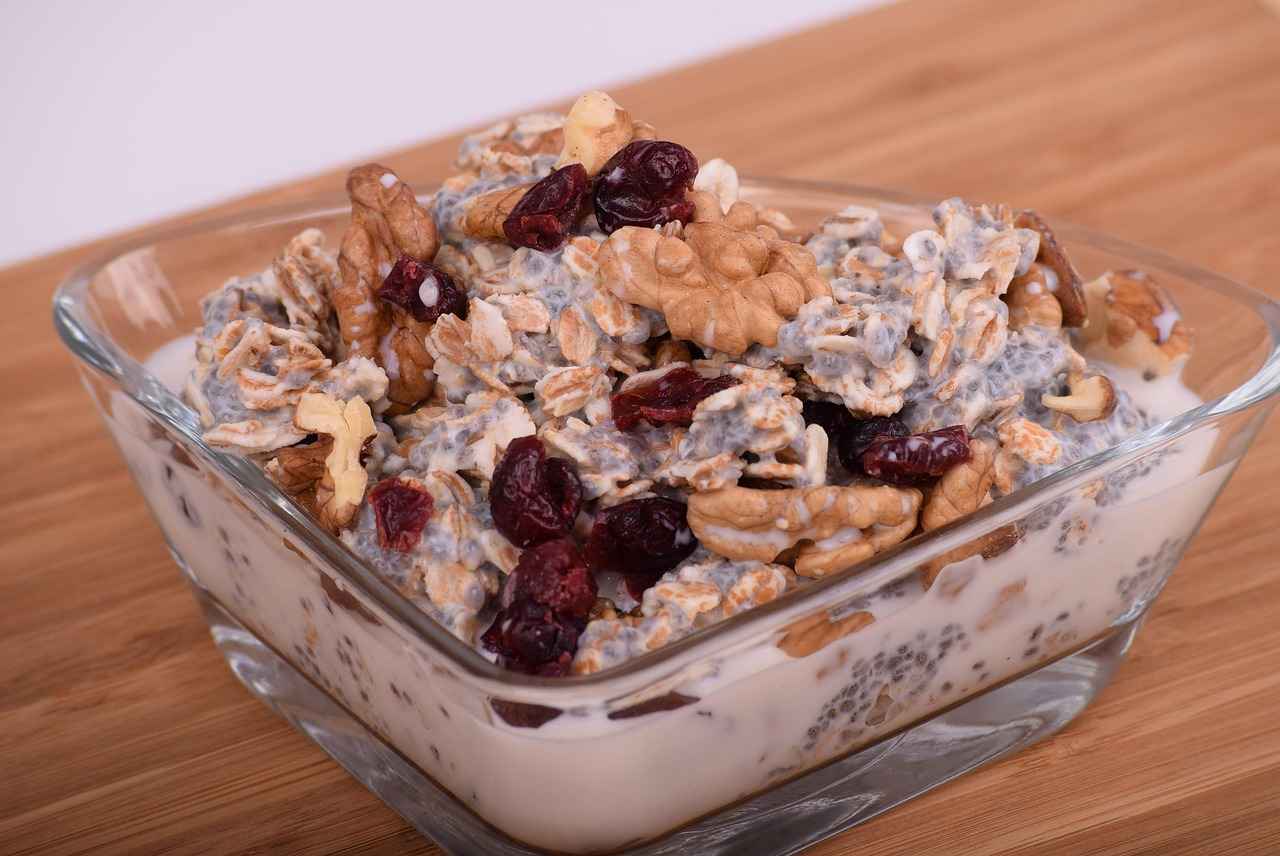
Chia Seeds as a Thickening Agent
Chia seeds are not just a nutritional powerhouse; they also serve as a remarkable natural thickening agent in various culinary applications. Their unique ability to absorb liquid and form a gel-like consistency makes them an excellent choice for enhancing the texture and richness of soups, sauces, and dressings.
When chia seeds are mixed with liquid, they can absorb up to 10-12 times their weight, creating a viscous gel. This property can be harnessed in many ways:
- Soups: Adding chia seeds to soups can enhance the creaminess without the need for heavy cream or thickeners. Simply sprinkle them into your pot and stir, allowing them to absorb some of the broth and create a more satisfying texture.
- Sauces: Whether you’re making a homemade pasta sauce or a tangy barbecue glaze, chia seeds can help achieve a thicker consistency. They not only improve texture but also boost the nutritional profile of your sauces.
- Dressings: For salad dressings, chia seeds can replace traditional thickeners like mayonnaise or yogurt. Combine them with vinegar, oil, and spices to create a healthy dressing that clings beautifully to your greens.
In addition to their thickening capabilities, chia seeds offer a variety of health benefits. They are an excellent source of omega-3 fatty acids, which are essential for heart health, and their high fiber content promotes digestive health. Incorporating chia seeds into your meals can contribute to a balanced diet while enhancing flavor and texture.
To use chia seeds effectively as a thickening agent, consider the following tips:
1. Start with 1 tablespoon of chia seeds for every cup of liquid.2. Allow the mixture to sit for at least 10-15 minutes to let the chia seeds absorb the liquid and swell.3. Stir well before serving to ensure an even consistency.
Another exciting way to utilize chia seeds is in chia gel. To make chia gel, simply mix 1 part chia seeds with 4 parts water, let it sit for 30 minutes, and then use it as a thickening agent in various recipes. This gel can be stored in the refrigerator for up to a week, making it a convenient option for meal prep.
It’s important to note that while chia seeds are safe for most people, consuming them in moderation is key. Their high fiber content can lead to digestive discomfort if consumed in excessive amounts. A typical serving size ranges from 1 to 2 tablespoons, which provides plenty of nutritional benefits without overwhelming your system.
In summary, chia seeds are a versatile ingredient that can significantly enhance your culinary creations. Their natural thickening properties, combined with their impressive health benefits, make them an ideal addition to any diet. Whether you’re looking to improve the texture of your dishes or boost their nutritional value, chia seeds are a fantastic choice.
Using Chia Seeds in Baking
When it comes to baking, chia seeds are a fantastic ingredient that can elevate your culinary creations. Not only do they add a delightful crunch, but they also infuse baked goods with nutritional benefits that can enhance your overall health. Below, we explore various ways to incorporate chia seeds into your favorite baked items, including bread, muffins, and pancakes.
Chia seeds are packed with essential nutrients, making them a valuable addition to any recipe. They are an excellent source of omega-3 fatty acids, fiber, and protein. By including chia seeds in your baked goods, you can boost their nutritional profile significantly. Here are some reasons to consider:
- Enhanced Texture: Chia seeds add a unique crunch that can make your baked goods more interesting.
- Moisture Retention: When soaked, chia seeds form a gel-like consistency that helps retain moisture, resulting in moist and tender baked items.
- Nutritional Boost: Adding chia seeds increases the fiber and protein content, making your treats more satisfying.
Incorporating chia seeds into your baking is simple and versatile. Here are some practical tips:
- Chia Egg Substitute: For vegans or those avoiding eggs, chia seeds can serve as an excellent egg replacement. Mix one tablespoon of chia seeds with three tablespoons of water, let it sit for about 15 minutes, and use it in place of one egg.
- Mixing into Batter: Add whole or ground chia seeds directly into your batter. For every cup of flour, consider adding 2 tablespoons of chia seeds.
- Topping for Bread and Muffins: Sprinkle chia seeds on top of your bread or muffin batter before baking for added texture and visual appeal.
Chia seeds can be seamlessly integrated into a variety of baked goods:
- Bread: Whether you’re making whole grain or white bread, adding chia seeds can enhance the flavor and nutrition. They pair well with herbs and spices.
- Muffins: Incorporating chia seeds into muffin recipes not only adds nutritional value but also contributes to a moist texture. Try blueberry or banana muffins for a delightful treat.
- Pancakes: Adding chia seeds to pancake batter can elevate your breakfast experience. The seeds add a satisfying crunch and can be paired with fruits for added flavor.
To maximize the benefits of chia seeds in your baking, consider the following tips:
- Soaking: Soak chia seeds in water or milk for 15-30 minutes before adding them to your batter. This helps them expand and release their nutrients.
- Storage: Store chia seeds in a cool, dry place in an airtight container to maintain freshness.
- Experiment: Don’t hesitate to experiment with different amounts of chia seeds in your recipes to find the perfect balance for your taste.
In summary, using chia seeds in baking not only enhances the flavor and texture of your favorite recipes but also adds a wealth of nutritional benefits. By incorporating these tiny seeds into your baked goods, you can enjoy delicious treats that support a healthier lifestyle.
How to Store Chia Seeds Properly
Chia seeds are a nutritional powerhouse, but to fully benefit from their health properties, proper storage is essential. Understanding how to store chia seeds can significantly impact their freshness and nutritional value. In this article, we will explore the best practices for storing chia seeds to ensure they remain beneficial for your dietary needs.
Chia seeds, like many other seeds, are sensitive to environmental conditions. When exposed to moisture, heat, or light, their quality can deteriorate. This not only affects their flavor but also diminishes their nutritional benefits. Therefore, understanding the best storage methods is crucial for maintaining the integrity of these tiny seeds.
- Cool Temperature: Chia seeds should be kept in a cool environment. Ideally, a temperature below 70°F (21°C) is recommended.
- Dry Environment: Moisture can lead to mold growth and spoilage. Ensure that the storage area is dry.
- Airtight Containers: Use airtight containers to prevent exposure to air, which can lead to oxidation and rancidity.
- Away from Sunlight: Direct sunlight can degrade the quality of chia seeds. Store them in a dark cupboard or pantry.
To maximize the shelf life of chia seeds, consider the following best practices:
- Choose the Right Container: Glass jars, metal tins, or high-quality plastic containers with tight-fitting lids work well.
- Label Your Containers: Include the purchase date on your container. This helps you keep track of freshness.
- Refrigeration: For long-term storage, consider refrigerating or freezing chia seeds. This can extend their shelf life significantly.
When stored properly, chia seeds can last for up to two years without losing their nutritional value. However, it’s always best to check for any signs of spoilage, such as an off smell or discoloration, before consumption.
If chia seeds are exposed to unfavorable conditions, they can become rancid. Rancid seeds not only lose their nutritional benefits but can also lead to digestive discomfort if consumed. It’s essential to be vigilant about storage to avoid these issues.
Incorporating chia seeds into your diet can provide numerous health benefits, but proper storage is key to ensuring they remain fresh and nutritious. By following the guidelines outlined above, you can enjoy chia seeds as a healthy addition to your meals without compromising their quality.

Are There Any Risks of Consuming Chia Seeds?
Chia seeds have gained immense popularity as a superfood, but like any food, they come with certain considerations. Understanding the risks associated with consuming chia seeds is essential for making informed dietary choices. While they are generally safe for most individuals, it is crucial to consume them in moderation. This article delves into the potential risks and offers practical insights on how to enjoy chia seeds safely.
Chia seeds are tiny, nutrient-rich seeds that can provide numerous health benefits. However, their high fiber content can lead to digestive issues if consumed in excessive amounts. It is important to recognize how much is too much when adding them to your diet.
- Digestive Discomfort: Overeating chia seeds can cause bloating, gas, and abdominal pain. This is primarily due to their high fiber content, which may overwhelm the digestive system, especially if you’re not accustomed to a high-fiber diet.
- Choking Hazard: Chia seeds can absorb up to 10 times their weight in water, forming a gel-like substance. If consumed dry or without adequate hydration, they may pose a choking risk, particularly for those with swallowing difficulties.
- Potential Allergic Reactions: Although rare, some individuals may experience allergic reactions to chia seeds. Symptoms can include itching, rashes, or gastrointestinal distress. Consulting a healthcare provider is advisable if you suspect an allergy.
To enjoy the benefits of chia seeds while minimizing risks, consider the following tips:
- Start Small: If you’re new to chia seeds, begin with a small serving size, such as one teaspoon, and gradually increase it to one or two tablespoons as your body adjusts.
- Soak Before Consumption: Soaking chia seeds in water or milk before eating can help prevent choking hazards and improve digestion. This allows the seeds to expand and become easier to digest.
- Stay Hydrated: Ensure you drink plenty of water throughout the day, especially when consuming high-fiber foods like chia seeds. Adequate hydration aids digestion and helps prevent discomfort.
The recommended serving size of chia seeds typically ranges from one to two tablespoons per day. This amount provides health benefits without overwhelming your digestive system. It’s crucial to listen to your body and adjust your intake based on how you feel.
If you have existing health conditions or concerns, it’s wise to consult with a healthcare provider before adding chia seeds to your diet. They can provide personalized advice based on your health history and dietary needs.
In conclusion, while chia seeds are a nutritious addition to many diets, moderation is key. By understanding the potential risks and following safe consumption practices, you can enjoy the many benefits of chia seeds without adverse effects.
Potential Allergies and Interactions
When incorporating chia seeds into your diet, it is essential to be aware of potential allergic reactions and interactions with medications. While these tiny seeds offer numerous health benefits, some individuals may experience adverse effects. Understanding these risks can help you make informed dietary choices.
Allergic reactions to chia seeds, although rare, can manifest in various ways. Common symptoms may include:
- Skin Reactions: Hives, rashes, or eczema-like symptoms may occur.
- Gastrointestinal Issues: Nausea, vomiting, or diarrhea can be signs of an allergic response.
- Respiratory Problems: Some individuals might experience difficulty breathing, wheezing, or nasal congestion.
If you notice any of these symptoms after consuming chia seeds, it is advisable to seek medical attention promptly.
Individuals with a history of allergies to other seeds, such as flaxseed or sesame seeds, may be at a higher risk for developing an allergy to chia seeds. Additionally, those with a family history of food allergies should exercise caution when trying chia seeds for the first time.
Before adding chia seeds to your diet, especially if you have a known history of food allergies or are taking medications, it is crucial to consult with a healthcare provider. They can provide personalized advice based on your health status and dietary needs.
Chia seeds can interact with certain medications, particularly those that affect blood sugar levels or blood clotting. Due to their high fiber content, chia seeds may also impact the absorption of some medications. If you are taking:
- Anticoagulants: Chia seeds may enhance the effects of blood-thinning medications.
- Diabetes Medications: They can lower blood sugar levels, which may lead to hypoglycemia if not monitored.
Discussing your chia seed intake with your healthcare provider can help prevent any potential complications.
If you decide to incorporate chia seeds into your diet, consider starting with a small amount. This approach allows you to monitor your body’s response and reduces the risk of adverse reactions. Gradually increasing your intake can help you enjoy the benefits of chia seeds while minimizing potential risks.
While chia seeds are generally safe for most individuals, being aware of potential allergies and interactions is crucial. By consulting with a healthcare provider and paying attention to your body’s reactions, you can safely enjoy the nutritional benefits of chia seeds. Remember, moderation is key, and listening to your body will ensure a positive experience with this superfood.
Recommended Serving Size
When considering the incorporation of chia seeds into your diet, understanding the is crucial for maximizing their health benefits while minimizing potential digestive discomfort. A typical serving size of chia seeds ranges from one to two tablespoons. This amount is sufficient to harness the nutritional advantages without overwhelming your digestive system.
Why is Serving Size Important?
Chia seeds are incredibly nutrient-dense, packed with omega-3 fatty acids, fiber, and protein. However, their high fiber content means that consuming them in large quantities can lead to digestive issues such as bloating or gas. Therefore, adhering to the recommended serving size helps ensure that you reap the benefits without adverse effects.
What Happens When You Exceed the Recommended Serving Size?
- Digestive Discomfort: Consuming more than the recommended amount can lead to bloating, gas, or even constipation due to the high fiber content.
- Nutrient Imbalance: Overindulgence in chia seeds might displace other essential nutrients in your diet, leading to potential imbalances.
- Hydration Issues: Chia seeds absorb a significant amount of liquid, and consuming them in excess without adequate hydration can lead to complications.
How to Measure Your Serving Size
Measuring out one to two tablespoons of chia seeds is straightforward. You can use a standard tablespoon measure to ensure accuracy. It’s also helpful to remember that one tablespoon is approximately 15 grams of chia seeds, providing around 60 calories and a wealth of nutrients.
What Are the Best Ways to Enjoy Chia Seeds?
To make the most of your chia seed intake, consider the following methods:
- Soaked in Water or Milk: Soaking chia seeds in liquid for about 30 minutes creates a gel-like consistency, making them easier to digest and enhancing their nutritional absorption.
- In Smoothies: Adding one tablespoon of chia seeds to your smoothies not only boosts their nutrient profile but also adds a pleasant texture.
- In Baking: Incorporate chia seeds into your baking recipes, such as muffins or bread, to enrich them with fiber and protein.
Are There Any Special Considerations?
While chia seeds are generally safe for most individuals, it’s important to consult with a healthcare provider if you have any underlying health conditions or are pregnant. Always start with the lower end of the serving size if you are new to chia seeds, gradually increasing as your body adjusts.
Final Thoughts
In summary, the of chia seeds is between one and two tablespoons, allowing you to enjoy their numerous health benefits without risking digestive discomfort. By measuring your intake and exploring various ways to incorporate them into your meals, you can enhance your diet and overall well-being.
Frequently Asked Questions
- What are chia seeds?
Chia seeds are tiny black seeds from the Salvia hispanica plant, packed with nutrients like omega-3 fatty acids, fiber, and protein, making them a superfood for your diet!
- How can I incorporate chia seeds into my meals?
You can add chia seeds to smoothies, puddings, baked goods, or even use them as a thickening agent in soups and sauces. Their mild flavor makes them super versatile!
- Are there any risks associated with consuming chia seeds?
While chia seeds are generally safe, it’s best to consume them in moderation. Overeating can lead to digestive discomfort due to their high fiber content.
- How should I store chia seeds?
To keep chia seeds fresh, store them in a cool, dry place in an airtight container, away from direct sunlight. This helps maintain their nutritional value!
- What is the recommended serving size for chia seeds?
A typical serving size is about one to two tablespoons. This amount provides health benefits without overwhelming your digestive system!
